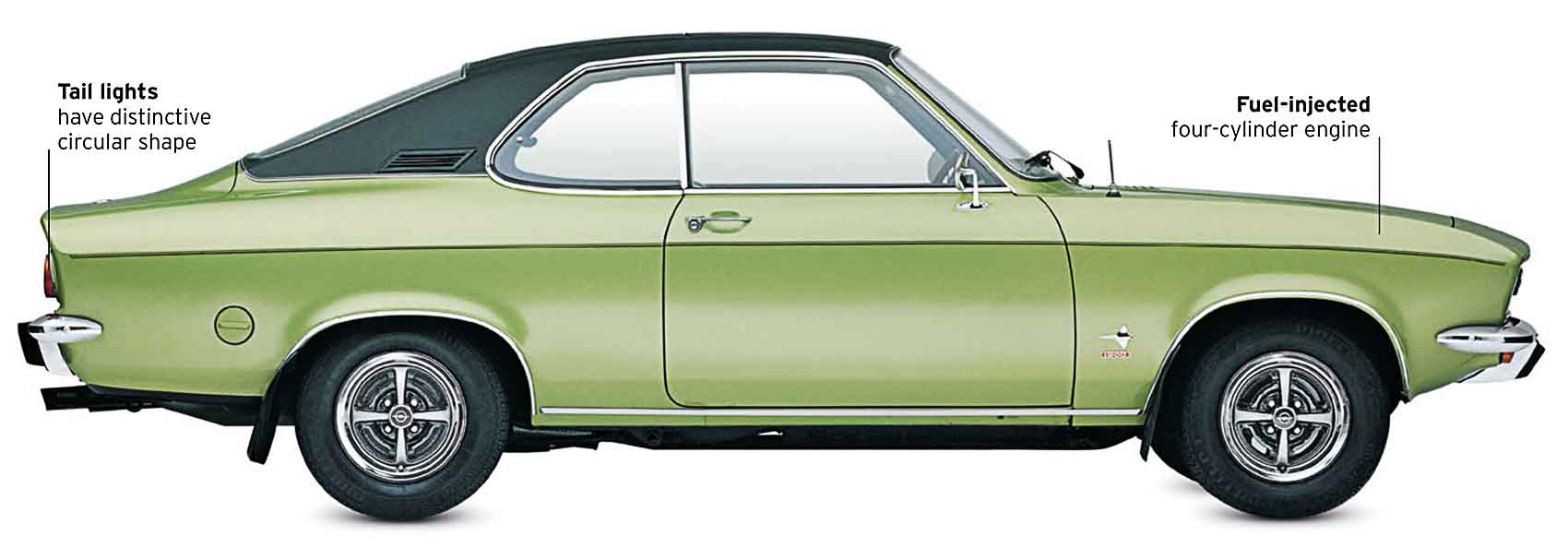
Stylish Coupés
There was a greater choice of affordable, high-style coupes in this decade than there had ever been before. Some had two doors, some were offered with three, and almost all were based to some degree on the engines, transmissions, suspension components, and structural platforms of their bigger-selling saloon car brethren. All of them were designed with the same aim in mind: to offer clean-cut style, drama, and elegance that even the best saloon cars—which inevitably had to make more compromises in the name of practicality—could scarcely hope to match.
Mazda RX-7, 1978

| Origin | Japan |
| Engine | 1,146 cc, two-rotor Wankel |
| Top speed | 125 mph (201 km/h) |
The RX-7 sold on its clean European looks and the Swiss-watch smoothness of its rotary engine. Mazda was the first to make Felix Wankel’s engine actually work and the RX-7 was a desirable and well-built car popular throughout the early 1980s.

Smooth Snout
The RX-7 is a great example of the emerging sports car styling trend—a low, penetrating nose with pop-up headlamps, plastic bumpers, and an air dam to reduce front-end aerodynamic lift at speed.

Practical and Purposeful
The RX-7’s rear window lifts up for access to the luggage space behind the rear seats. A big rubber spoiler is essential trim for a late-70s’ sports car. There’s no exterior brightwork here—everything is either body-colored or black.

Rotary Power
Instead of pistons in cylinders the Wankel engine has, in essence, triangular rotating elements inside a figure-of-eight shaped chamber. Because there are no reciprocating parts the engine revs very smoothly.
Datsun 240Z, 1969

| Origin | Japan |
| Engine | 2,393 cc, straight six-cylinder |
| Top speed | 125 mph (201 km/h) |
The 240Z established Japan on the world sports car stage at a time when there was a gaping hole in that sector. It had the looks, performance, handling, and equipment levels. A great value sporting package that outsold all rivals and founded a Z-car dynasty.
Opel Manta GT/E, 1970

| Origin | Germany |
| Engine | 1,897 cc, straight-four |
| Top speed | 116 mph (186 km/h) |
Despite attractive styling and almost half-a-million made, most Mantas have rusted away: a great shame, as this was a civilized touring car with engines from 1.2 to 1.9 liters. The fuel-injected GT/E was the highest-specification model, though there was a rare turbo version in 1973.
Alfa Romeo Junior Zagato, 1970

| Origin | Italy |
| Engine | 1,290 cc, straight-four |
| Top speed | 105 mph (169 km/h) |
Ercole Spada at Zagato achieved the impossible: he took an Alfa Romeo GT Junior and turned it into something even more arresting to look at. Alloy doors and bonnet made for minor weight reduction, but it was only fractionally faster than the standard car. The cost held back sales.
Porsche 924, 1976

| Origin | Germany |
| Engine | 1,984 cc, straight-four |
| Top speed | 125 mph (201 km/h) |
Purists disapprove of the 924’s provenance: originally it was a Volkswagen/Porsche joint venture, and its engine was shared with a Volkswagen van (though with a new Porsche cylinder head). But the front-engined 924 was a best-seller for Porsche and expanded its market beyond the dedicated sporting driver.
It is a quote. The Classic Car Book – The Definitive Visual History 2016




